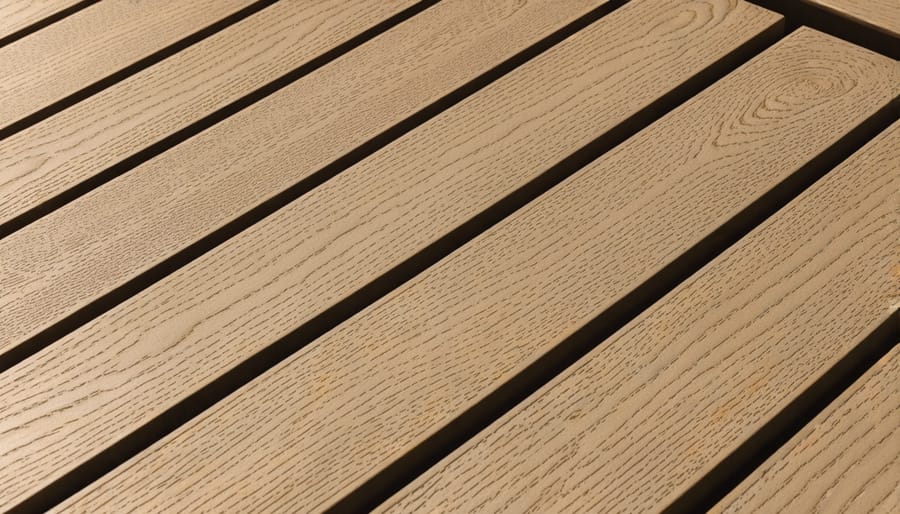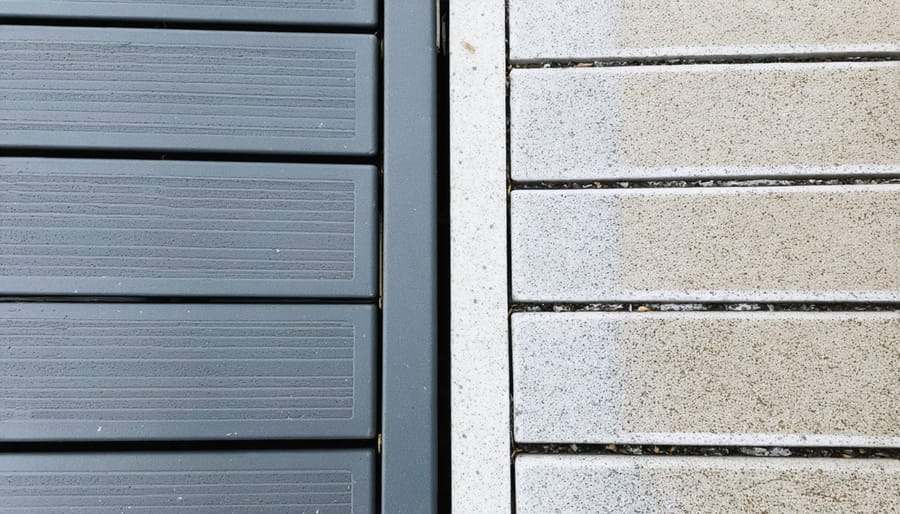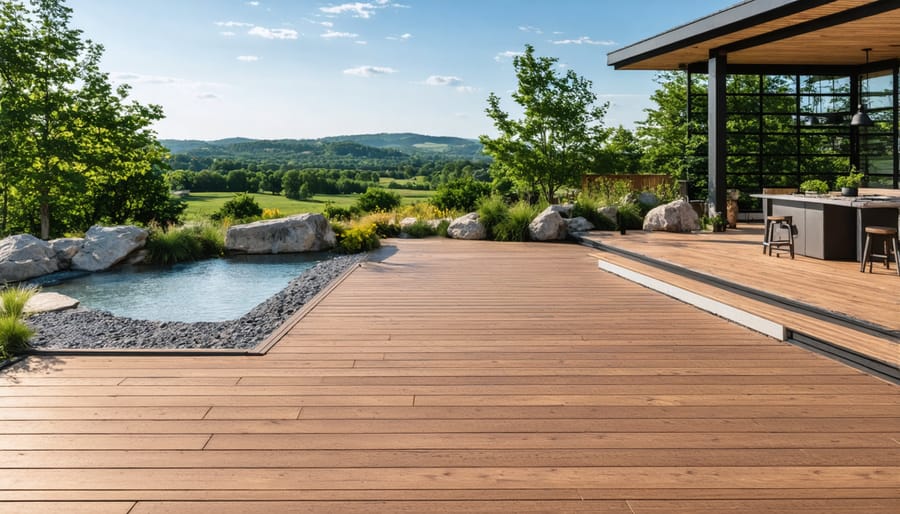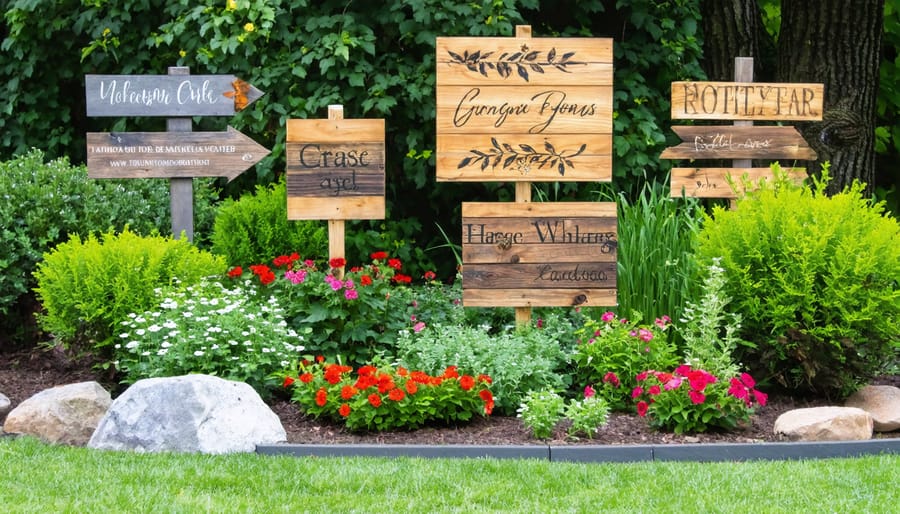When you’re planning your dream patio or deck, the choice between Q decking and traditional concrete can make or break your project’s success, budget, and long-term satisfaction. Q decking—a composite decking material made from recycled wood fibers and plastic—has emerged as a compelling alternative to concrete for outdoor living spaces, but it’s not a one-size-fits-all solution.
The decision hinges on more than just aesthetics. While concrete offers unmatched durability and a lower upfront cost, Q decking delivers barefoot comfort, easier installation, and a warm, natural appearance that transforms your backyard into an inviting retreat. Understanding the real-world trade-offs—from installation complexity and maintenance requirements to how each material performs in your specific climate—will save you from costly regrets down the road. Whether you’re a weekend DIY warrior or planning to hire professionals, this comprehensive comparison cuts through the marketing hype to give you the honest, practical insights you need to choose the right foundation for years of outdoor enjoyment.
What Exactly Is Q Decking?
If you’re exploring alternatives to traditional concrete patios, you’ve probably stumbled across Q decking and wondered, “What exactly is this stuff?” Don’t worry—you’re not alone in the confusion! Q decking isn’t some mysterious product from a sci-fi movie; it’s actually a brand name for a specific type of decking system that’s been gaining serious traction in the home improvement world.
At its core, Q decking refers to composite decking boards made from a blend of recycled wood fibers and durable plastic polymers. Think of it as the perfect marriage between natural wood’s beauty and plastic’s resilience. Unlike traditional lumber that can warp, splinter, or rot over time, Q decking is engineered to withstand the elements while maintaining its appearance year after year.
What makes Q decking stand out from other composite decking materials is its unique cap-shield technology—essentially a protective outer layer that guards against fading, staining, and moisture damage. This innovation means your deck won’t absorb spills, harbor mold, or turn gray from sun exposure like traditional wood often does.
The boards typically come in standardized lengths and widths, featuring grooved edges that work with hidden fastening systems for a clean, seamless look. Many homeowners appreciate that Q decking doesn’t require the endless cycle of staining, sealing, and sanding that wood demands.
When you’re comparing Q decking to concrete surfaces, it’s important to understand you’re looking at fundamentally different materials. While concrete offers a solid, permanent foundation, Q decking provides a warmer, more inviting surface that’s easier on bare feet and creates that classic outdoor living room vibe many homeowners crave.

The Concrete Reality: Understanding Your Baseline Option
Before diving into alternative decking solutions, let’s talk about what you probably already know: good old-fashioned concrete. It’s been the backbone of outdoor spaces for generations, and honestly, there’s a reason it’s stuck around this long.
Concrete offers a solid, no-nonsense foundation for your outdoor living area. Whether you’re looking at a simple patio slab or something more stylish, concrete delivers durability you can literally stand on. The classic broom-finished concrete provides excellent traction and is budget-friendly, making it the go-to choice for many homeowners tackling their first patio project.
But here’s where it gets interesting—concrete isn’t just gray slabs anymore. Today’s concrete finishes have seriously leveled up. You’ve got stamped concrete that mimics stone, brick, or even wood patterns. Exposed aggregate adds texture and visual interest while hiding minor stains beautifully. For a smoother, more modern look, polished or trowel-finished concrete creates sleek surfaces perfect for contemporary designs.
Stained concrete opens up a whole color palette beyond basic gray, letting you customize your space to match your home’s aesthetic. Some homeowners even combine techniques—think stamped borders with smooth centers or colored concrete with decorative scoring patterns.
The beauty of concrete is its versatility and permanence. Once it’s down and properly cured, you’ve got a surface that’ll handle everything from summer barbecues to winter freeze-thaw cycles. But as we’ll explore, this traditional approach isn’t your only option when creating the perfect outdoor space.

Head-to-Head: How Q Decking Stacks Up Against Concrete
Installation: Time, Complexity, and Your Weekends
Let’s talk about the elephant in the room—how much of your precious weekend will each option gobble up?
**Q Decking: The Weekend Warrior’s Friend**
Here’s the good news: Q decking is remarkably DIY-friendly. Most composite decking systems, including Q decking, feature tongue-and-groove designs or hidden fastener systems that snap together like sophisticated building blocks. If you’ve ever assembled furniture from that Swedish store (you know the one), you’ve got the skills needed.
A typical 12×12 foot deck can take a handy homeowner roughly 2-3 weekends to complete, including framing. The boards are lightweight, cut easily with standard tools, and don’t require specialized equipment. You’ll need a circular saw, drill, level, and patience—but not a concrete mixer or finishing trowels.
**Concrete: Call in the Pros (Probably)**
Concrete, on the other hand, is less forgiving. Pouring a patio involves site excavation, precise grading, formwork, mixing (lots of mixing), pouring, and finishing—all within tight time windows before the concrete sets. Mess up the slope or finish, and you’re living with puddles or a rough surface forever.
While small projects might tempt ambitious DIYers, most homeowners hire professionals. A concrete patio typically takes 1-2 days for installation plus 7 days of curing before use. Professional costs run $6-$12 per square foot for labor alone.
**The Verdict:** Q decking wins the DIY battle hands down, giving you control, flexibility, and those satisfying “I built this” bragging rights.
Cost Breakdown: Upfront Investment vs. Long-Term Value
Let’s talk numbers, because we know that’s often the deciding factor when you’re planning your dream outdoor space!
**The Initial Investment**
Here’s where concrete typically wins the upfront battle. A basic concrete patio usually runs between $6-$12 per square foot installed, making it one of the most budget-friendly options initially. Q decking (composite decking), on the other hand, typically costs $15-$25 per square foot installed, sometimes even more for premium brands. For a standard 200-square-foot patio, that’s a difference of roughly $1,800 to $5,000 right out of the gate.
**The Long Game Changes Everything**
But wait—don’t let those initial numbers scare you away from Q decking just yet! This is where things get interesting. Concrete requires sealing every 2-3 years (around $300-$500 each time), occasional crack repairs, and potential resurfacing after 10-15 years. Over 25 years, you’re looking at $3,000-$7,000 in maintenance costs.
Q decking? It’s practically a “set it and forget it” situation. A simple wash once or twice a year with soap and water is typically all you need. No sealing, no staining, no crack repairs. Your maintenance costs over that same 25 years might total just $200-$300.
**The Real Value Picture**
When you factor in those maintenance savings, the gap narrows significantly—sometimes disappearing entirely. Plus, Q decking often boosts resale value more than basic concrete, making it an investment that actually pays you back.
Durability and Maintenance: What Your Future Self Will Thank You For
Let’s talk about what happens after the honeymoon phase with your new outdoor space—because nobody wants buyer’s remorse five years down the line!
**Q decking** is a long-distance relationship kind of material. Composite boards typically come with 25-30 year warranties, resisting rot, insect damage, and most weather tantrums Mother Nature throws their way. You’ll never need to sand, stain, or seal these boards—just a occasional soap-and-water wash keeps them looking fresh. The trade-off? Some fading is inevitable over time (though modern composites have minimized this), and if a board does get damaged, replacing individual pieces can be trickier than with traditional lumber.
**Concrete**, meanwhile, is the dependable friend who sometimes needs a little TLC. Properly poured and finished concrete can last 50+ years, but it’s not entirely hands-off. You’ll want to reseal every 2-3 years to prevent moisture infiltration and staining—especially if you’re dealing with freeze-thaw cycles that can cause cracking. Minor cracks are almost inevitable with concrete, though control joints help manage where they appear. The good news? Concrete repairs are straightforward, and a well-maintained slab can look great for decades.
Think about your commitment level: Q decking rewards the “set it and forget it” crowd, while concrete suits those who don’t mind periodic maintenance to keep things pristine. Your future self will appreciate whichever choice matches your lifestyle best!
Aesthetic Appeal and Design Flexibility
When it comes to visual impact, Q decking and concrete offer dramatically different vibes for your outdoor space. Q decking delivers that warm, inviting aesthetic that screams “backyard oasis”—think natural wood grains, rich textures, and colors ranging from soft grays to deep mahogany. You’ve got loads of customization options here: mix and match board colors, create striking patterns with different plank directions, or add decorative inlays and borders to make your deck truly one-of-a-kind.
Concrete, while once considered purely utilitarian, has come a long way in the style department. Stamped concrete can mimic stone, brick, or even wood (though let’s be honest, it’s not fooling anyone up close). You can choose from various finishes—polished, brushed, or exposed aggregate—and acid staining opens up a palette of earthy tones. However, concrete tends to lean more minimalist and modern, fitting sleek contemporary homes beautifully.
If you’re drawn to cozy, cottage-style charm or transitional designs, Q decking naturally complements those aesthetics. For ultra-modern, industrial, or Mediterranean-inspired homes, concrete might feel more cohesive. The beauty of Q decking is its tactile warmth underfoot—something concrete can’t quite replicate, no matter how stylish the finish.
Comfort and Usability: The Barefoot Test
Here’s where the barefoot test really separates these materials. On a scorching summer afternoon, concrete becomes almost unbearably hot—we’re talking “run for the shade” levels of discomfort. Q decking, particularly composite options, stays significantly cooler underfoot thanks to its design and material composition. While it will still warm up in direct sun, the temperature difference is noticeable and often means the distinction between enjoying your patio and avoiding it during peak hours.
Slip resistance is another crucial factor for everyday living. Concrete can become surprisingly slippery when wet, especially if it has a smooth finish. Q decking typically features textured surfaces specifically engineered for traction, making it safer around pools or after rain showers—a real peace of mind when kids are running around.
The overall comfort factor goes beyond temperature. Q decking has a bit more give than rigid concrete, making it gentler on your feet and joints during those long summer barbecues. It’s also warmer in cooler months, creating a more inviting surface year-round. For families who truly live outdoors, these small comfort differences add up to a noticeably more pleasant daily experience.

When Q Decking Is Your Best Bet
Q decking really shines when you’re working with elevated structures or uneven terrain. If you’re building a second-story deck or need to create outdoor living space over a sloped yard, Q decking offers a practical solution that concrete simply can’t match. Picture trying to pour a concrete patio 10 feet off the ground—not exactly a weekend DIY project!
For homeowners looking to add warmth and character to their outdoor spaces, Q decking is your go-to choice. Unlike cold, hard concrete, composite decking creates a cozy atmosphere that’s perfect for barefoot summer evenings and complements other backyard design elements beautifully. It’s especially ideal when you’re designing entertaining areas where comfort matters—nobody wants to stand on scorching concrete during July barbecues.
Q decking also wins when you’re dealing with existing structures. Adding a deck over an old concrete patio or extending from your home’s upper level becomes straightforward with a proper frame and decking boards. This approach breathes new life into tired outdoor spaces without the mess and expense of concrete removal.
If you’re planning a space that flows seamlessly with your indoor living areas and coordinates with your choosing outdoor furniture style, Q decking offers color and texture options that concrete can’t replicate. For pool surrounds where slip-resistance and comfort are priorities, or rooftop decks where weight considerations matter, Q decking provides the performance and aesthetics modern homeowners crave.
When Concrete Makes More Sense
Let’s be real—Q decking isn’t the superhero solution for every outdoor space, and that’s totally okay! Understanding when traditional concrete makes more sense will actually save you headaches and money down the road.
If you’re planning a space that’ll handle serious heavy-duty equipment, concrete wins hands-down. Think garage floors, RV parking pads, or areas where you’ll regularly drive vehicles. Concrete’s compression strength is unmatched for these applications, and trying to use Q decking would be like bringing a butter knife to a construction site.
Large-scale commercial projects often lean toward concrete too, especially when you’re covering massive square footage on a tight budget. The economies of scale work in concrete’s favor here—once that truck arrives, pouring hundreds of square feet becomes surprisingly cost-effective.
For outdoor kitchen projects with built-in appliances, permanent structures, or heavy stone features, concrete provides the rock-solid foundation you need. You don’t want your beautiful pizza oven settling unevenly!
Ground-level applications where you want a seamless transition from indoor flooring also favor concrete, particularly with stained or polished finishes. And if you’re dealing with extremely steep slopes or complex drainage requirements, concrete’s moldable nature gives engineers more flexibility to solve tricky problems.
The bottom line? Choose concrete when permanence, extreme durability, and vehicle-load capacity matter most. Save Q decking for elevated spaces where comfort, aesthetics, and easier installation make it shine.
Making Your Decision: A Quick Reality Check
Before you make your final call, let’s run through a quick reality check to ensure you’re choosing the right option for *your* situation. Start by asking yourself these key questions:
**What’s your timeline?** If you need a finished outdoor space within a weekend or two, Q decking wins hands down. Concrete requires curing time and often professional scheduling that can stretch your project timeline considerably.
**How’s your budget looking—today and tomorrow?** Consider not just the upfront costs but also the five-year picture. Q decking typically costs more initially but saves you money on maintenance, while concrete starts cheaper but may need sealing, repairs, and resurfacing down the road.
**What’s your climate like?** Living somewhere with freeze-thaw cycles? Q decking handles temperature swings beautifully without cracking. In consistently hot, sunny climates, you’ll appreciate that it stays cooler underfoot than concrete.
**How handy are you feeling?** Be honest here! Q decking is genuinely DIY-friendly with straightforward installation, while concrete work often benefits from professional expertise to avoid costly mistakes.
**What’s your lifestyle?** Got kids who’ll be running around barefoot? Hosting frequent outdoor gatherings? Q decking offers a warmer, more forgiving surface. If you’re prioritizing a sleek, modern aesthetic and durability for heavy outdoor furniture or equipment, concrete might align better with your vision.
Trust your gut after weighing these factors—there’s no universally “wrong” choice, just the right one for your unique situation.
Choosing between Q decking and traditional concrete ultimately comes down to your lifestyle, budget, and vision for your outdoor space. If you’re craving warmth underfoot, easier installation, and a deck that evolves beautifully over time, Q decking delivers that inviting atmosphere concrete simply can’t match. On the other hand, if you need unbeatable durability for heavy traffic areas or prefer minimal long-term maintenance, concrete remains a solid performer. The good news? There’s no wrong answer here—just the right fit for *your* unique situation. Take what you’ve learned about costs, installation requirements, and maintenance expectations, then visualize how you’ll actually use your space. Will you be walking barefoot on summer mornings? Hosting neighborhood gatherings? Your daily lifestyle holds the answer. Now’s the time to move forward with confidence, knowing you’ve done your homework and can create an outdoor space that truly reflects your needs and style.










